Premium Only Content
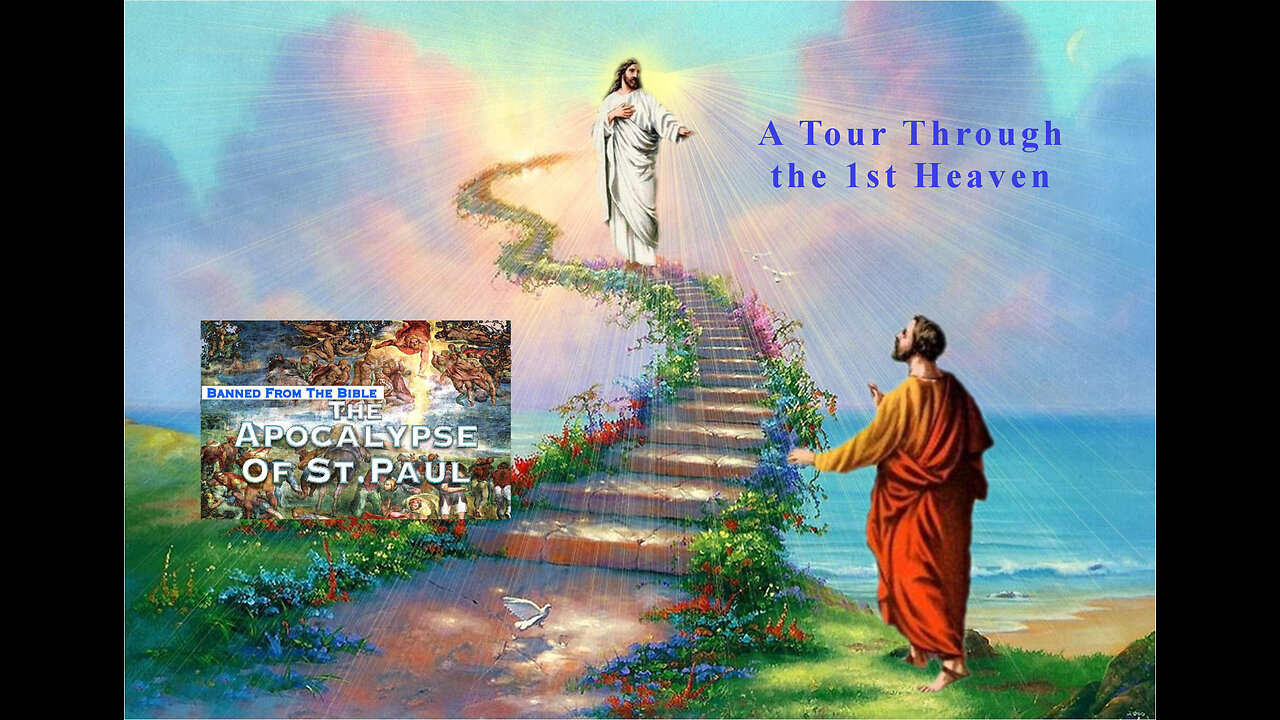
The Vision of Paul part 2 - Paul witnesses a soul being removed from a dying person.
The Vision of Paul - Part 2 - The Tour Continues. He witnesses a soul being removed from a person who is just about to die.
https://rumble.com/user/BiblicalGold
Resources:
Here are several links to additional information about the Nicene Counsel.
The links include articles and videos.
First Council of Nicaea (Wikipedia)
https://en.wikipedia.org/wiki/First_Council_of_Nicaea
The Messed Up Truth Of The Council Of Nicaea (Video)
https://www.youtube.com/watch?v=Zoenkwr7_wk
The Early Christian Fathers by Cyril C. Richardson (free downloadable e-book)
https://archive.org/details/LCC1_ECF/page/n233/mode/2up
Council of Nicea
The Council of Nicaea was a council of Christian bishops convened in the city of Nicaea (now İznik, Turkey) by the Roman Emperor Constantine I in 325 AD. It was the first ecumenical council in the history of the Christian church and was intended to address the controversy of Arianism, a doctrine that held that Christ was not divine but was a created being.
The council was attended by around 318 bishops from across the Roman Empire, and it was presided over by Emperor Constantine himself. The council resulted in the promulgation of the Nicene Creed, which is still an important statement of Christian belief today. The creed affirms the divinity of Jesus Christ and the Holy Spirit, and it rejects the Arian view that Jesus was a created being.
The Council of Nicaea was a significant event in the history of Christianity, as it helped to establish the doctrine of the Trinity and to clarify the nature of Christ. It also marked the beginning of the development of the Nicene Creed, which would become a central statement of Christian faith.
Here are some key points about the Council of Nicaea:
• The council was convened by Emperor Constantine in 325 AD.
• It was attended by around 318 bishops from across the Roman Empire.
• The council was presided over by Emperor Constantine himself.
• The council resulted in the promulgation of the Nicene Creed.
• The creed affirms the divinity of Jesus Christ and the Holy Spirit.
• The creed rejects the Arian view that Jesus was a created being.
• The council marked the beginning of the development of the Nicene Creed, which would become a central statement of Christian faith.
• The council was a significant event in the history of Christianity, as it helped to establish the doctrine of the Trinity and to clarify the nature of Christ.
What books were found among the dead sea scrolls
According to the provided search results, the following books were found among the Dead Sea Scrolls:
• Psalms (39 times)
• Deuteronomy (33 times)
• 1 Enoch (25 times)
• Genesis (24 times)
• Isaiah (22 times)
• Jubilees (21 times)
• Exodus (18 times)
• Leviticus (17 times)
• Numbers (11 times)
• Minor Prophets (10 times)
• Daniel (8 times)
• Jeremiah (6 times)
• Ezekiel (6 times)
• Job (6 times)
• Tobit (5 times)
• Kings (4 times)
• Samuel (4 times)
• Judges (4 times)
• Song of Songs (4 times)
• Ruth (4 times)
• Lamentations (4 times)
• Sirach (3 times)
• Ecclesiastes (2 times)
• Joshua (2 times)
• Judges (2 times)
• Proverbs (2 times)
• Jonah (1 time)
• Zechariah (1 time)
• Nahum (1 time)
Additionally, the following apocryphal books were found:
• Ben Sira (also known as the Wisdom of Ben Sira, Sirach, or Ecclesiasticus)
• The book of Tobit
• The Epistle of Jeremiah
Note that the Book of Esther is not found among the Dead Sea Scrolls.
============
About Fair Use
Fair use is a legal doctrine that promotes freedom of expression by permitting the unlicensed use of copyright-protected works in certain circumstances. Section 107 of the Copyright Act provides the statutory framework for determining whether something is a fair use and identifies certain types of uses—such as criticism, comment, news reporting, teaching, scholarship, and research—as examples of activities that may qualify as fair use. Section 107 calls for consideration of the following four factors in evaluating a question of fair use:
1. Purpose and character of the use, including whether the use is of a commercial nature or is for nonprofit educational purposes: Courts look at how the party claiming fair use is using the copyrighted work, and are more likely to find that nonprofit educational and noncommercial uses are fair. This does not mean, however, that all nonprofit education and noncommercial uses are fair and all commercial uses are not fair; instead, courts will balance the purpose and character of the use against the other factors below. Additionally, “transformative” uses are more likely to be considered fair. Transformative uses are those that add something new, with a further purpose or different character, and do not substitute for the original use of the work.
2. Nature of the copyrighted work: This factor analyzes the degree to which the work that was used relates to copyright’s purpose of encouraging creative expression. Thus, using a more creative or imaginative work (such as a novel, movie, or song) is less likely to support a claim of a fair use than using a factual work (such as a technical article or news item). In addition, use of an unpublished work is less likely to be considered fair.
3. Amount and substantiality of the portion used in relation to the copyrighted work as a whole: Under this factor, courts look at both the quantity and quality of the copyrighted material that was used. If the use includes a large portion of the copyrighted work, fair use is less likely to be found; if the use employs only a small amount of copyrighted material, fair use is more likely. That said, some courts have found use of an entire work to be fair under certain circumstances. And in other contexts, using even a small amount of a copyrighted work was determined not to be fair because the selection was an important part—or the “heart”—of the work.
4. Effect of the use upon the potential market for or value of the copyrighted work: Here, courts review whether, and to what extent, the unlicensed use harms the existing or future market for the copyright owner’s original work. In assessing this factor, courts consider whether the use is hurting the current market for the original work (for example, by displacing sales of the original) and/or whether the use could cause substantial harm if it were to become widespread.
In addition to the above, other factors may also be considered by a court in weighing a fair use question, depending upon the circumstances. Courts evaluate fair use claims on a case-by-case basis, and the outcome of any given case depends on a fact-specific inquiry. This means that there is no formula to ensure that a predetermined percentage or amount of a work—or specific number of words, lines, pages, copies—may be used without permission.
From <https://www.copyright.gov/fair-use/>
Welcome to the U.S. Copyright Office Fair Use Index. This Fair Use Index is a project undertaken by the Office of the Register in support of the 2013 Joint Strategic Plan on Intellectual Property Enforcement of the Office of the Intellectual Property Enforcement Coordinator (IPEC). Fair use is a longstanding and vital aspect of American copyright law. The goal of the Index is to make the principles and application of fair use more accessible and understandable to the public by presenting a searchable database of court opinions, including by category and type of use (e.g., music, internet/digitization, parody).
The Fair Use Index tracks a variety of judicial decisions to help both lawyers and non-lawyers better understand the types of uses courts have previously determined to be fair—or not fair. The decisions span multiple federal jurisdictions, including the U.S. Supreme Court, circuit courts of appeal, and district courts. Please note that while the Index incorporates a broad selection of cases, it does not include all judicial opinions on fair use. The Copyright Office will update and expand the Index periodically.
The Fair Use Index is designed to be user-friendly. For each decision, we have provided a brief summary of the facts, the relevant question(s) presented, and the court’s determination as to whether the contested use was fair. You may browse all of the cases, search for cases involving specific subject matter or categories of work, or review cases from specific courts. The Index ordinarily will reflect only the highest court decision issued in a case. It does not include the court opinions themselves. We have provided the full legal citation, however, allowing those who wish to read the actual decisions to access them through free online resources (such as Google Scholar and Justia), commercial databases (such as Westlaw and LEXIS), or the federal courts’ PACER electronic filing system, available at www.pacer.gov.
Although the Fair Use Index should prove helpful in understanding what courts have to date considered to be fair or not fair, it is not a substitute for legal advice. Fair use is a judge-created doctrine dating back to the nineteenth century and codified in the 1976 Copyright Act. Both the fact patterns and the legal application have evolved over time, and you should seek legal assistance as necessary and appropriate.
We hope you find the Fair Use Index a helpful resource. If you are concerned as to whether a particular use is fair, however, or believe that someone has made an unauthorized use of a copyrighted work in a manner that is not fair, it is best to consult an attorney.
Please note that the Copyright Office is unable to provide specific legal advice to individual members of the public about questions of fair use. See 37 C.F.R. 201.2(a)(3)
-
 LIVE
LIVE
Playback Request Live
1 hour agoLevel Up: Our First Live Performance ft. Lady Desiree
140 watching -
 LIVE
LIVE
Blabs Games
54 minutes agoBig Bad Uno Plays | Noob Plays
28 watching -
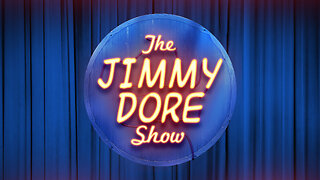 LIVE
LIVE
The Jimmy Dore Show
2 hours agoTrump Attacks His OWN Supporters As Democrat Dupes Over Epstein! Columbia University CAVES to Trump!
7,460 watching -
 1:25:13
1:25:13
Kim Iversen
3 hours agoColonel Macgregor: The Pentagon Has No Strategy, Only Targets
70.8K62 -
 12:32
12:32
JapaNomad - Video Tours
14 hours agoR35 GT-R POV Drive in Tokyo 🗼Shinjuku | Pure Car ASMR | No Music | No Voice | 4K HDR
3.18K3 -
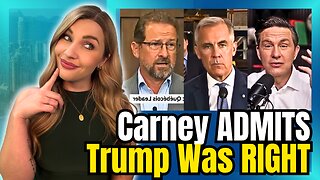 24:23
24:23
Jasmin Laine
5 hours ago“Trump Was RIGHT”—Carney CAVES, Then CBC Host Gets SLAPPED With Brutal Truth
3.85K13 -
 26:41
26:41
Fat Lip Collective
14 hours ago3D Printed Custom Dash | Best Materials for Car Parts (OEM+ Build)
3.83K1 -
 12:10:16
12:10:16
LFA TV
23 hours agoLFA TV ALL DAY STREAM - WEDNESDAY 7/16/25
175K18 -
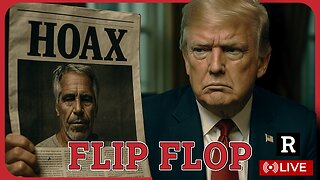 1:40:41
1:40:41
Redacted News
4 hours agoTrump: "Epstein files are a HOAX!" White House does 180 on "release the Epstein Files" | Redacted
155K164 -
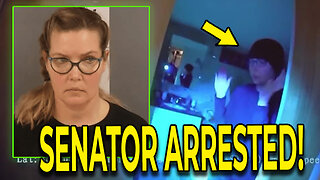 17:11
17:11
T-SPLY
6 hours agoState Senator Charged And Arrested For Burglary!
11K11